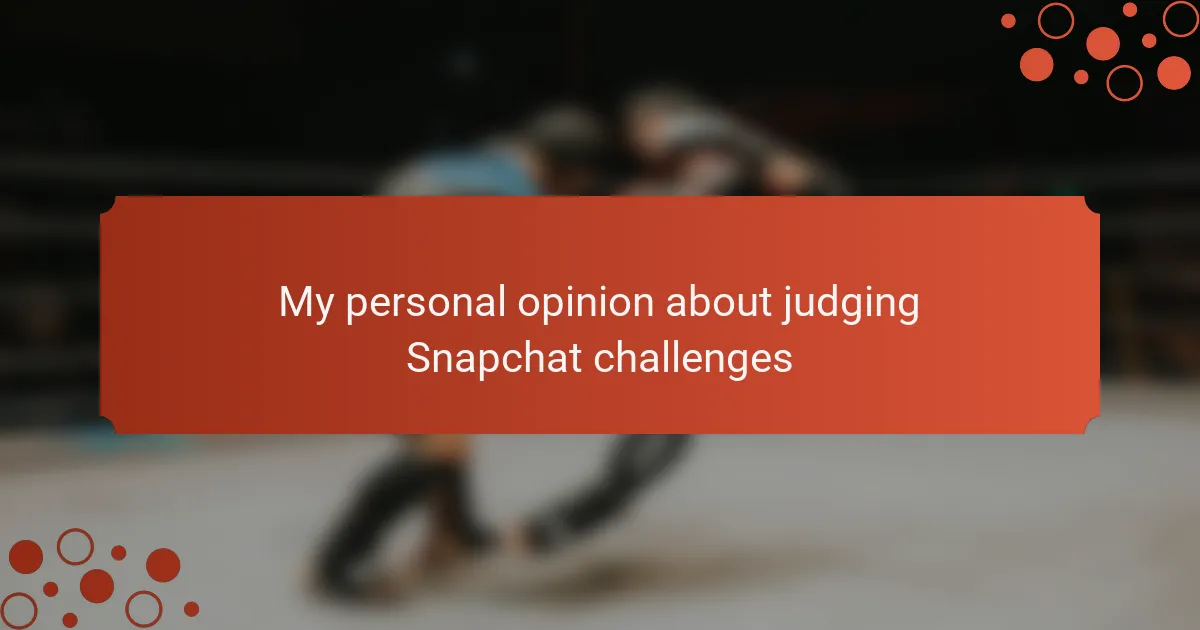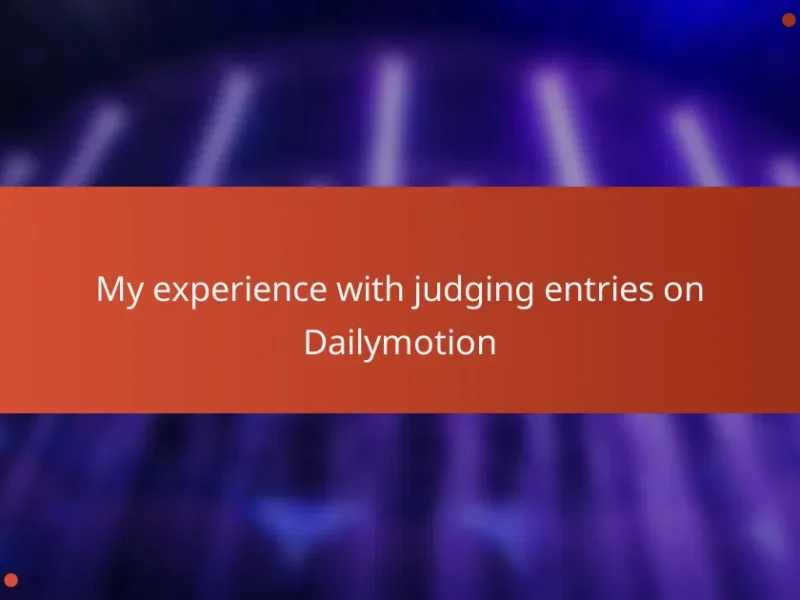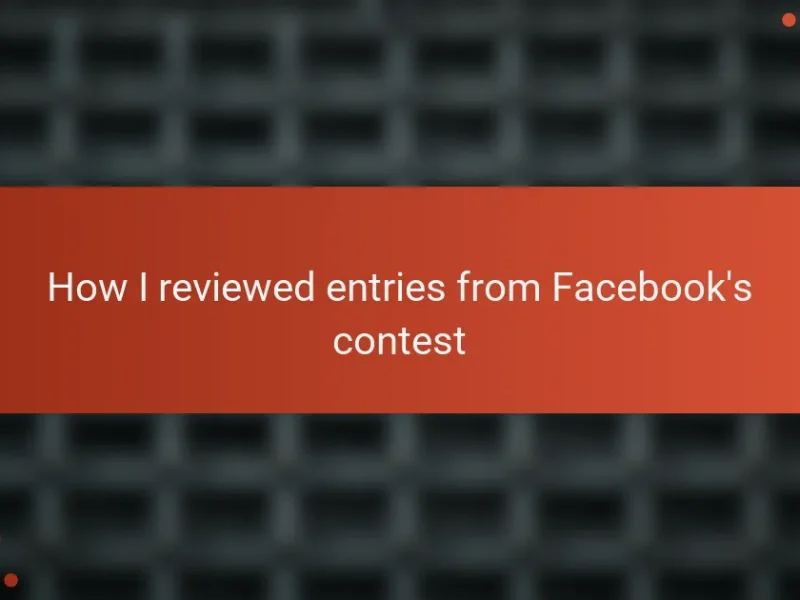Key takeaways
- Video contests foster creativity and community, encouraging participants to share personal stories and moments that resonate with viewers.
- Judging criteria for video contests should prioritize originality, technical quality, and emotional impact, allowing for authentic expressions of creativity.
- Challenges in judging can arise from balancing creativity with adherence to rules and navigating the subjective nature of personal expression.
- Fair judging practices involve clear criteria, setting aside personal biases, and approaching the process with empathy to uplift creators.
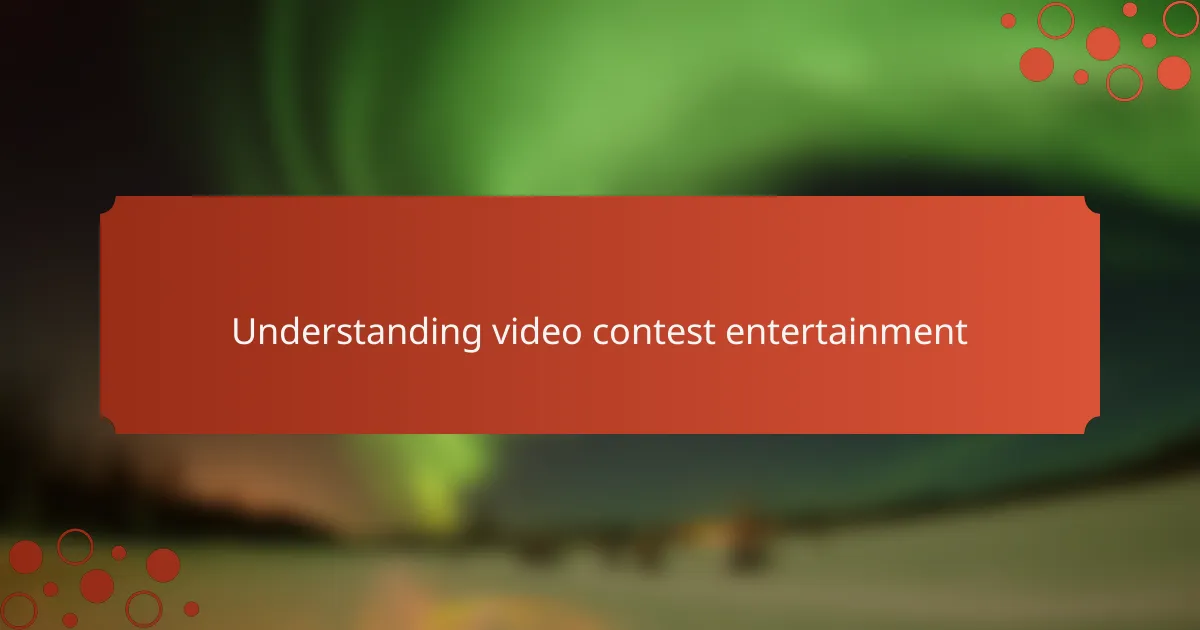
Understanding Video Contest Entertainment
Video contest entertainment has a unique way of capturing creativity in real time. From my experience, watching participants pour their hearts into short videos reminds me of how dynamic and unpredictable this platform can be. Have you ever found yourself rooting for a contestant not just because they’re talented, but because their story resonates with you?
What fascinates me most is how these contests blend competition and community. It’s not just about winning; it’s about sharing moments that spark joy, surprise, or even introspection. I’ve seen how a single video can inspire hundreds, creating ripples far beyond just a contest stage.
At its core, video contest entertainment challenges both creators and viewers to see everyday moments through a fresh lens. It pushes boundaries and reshapes what entertainment means in a digital age—don’t you think that’s what makes it so captivating?
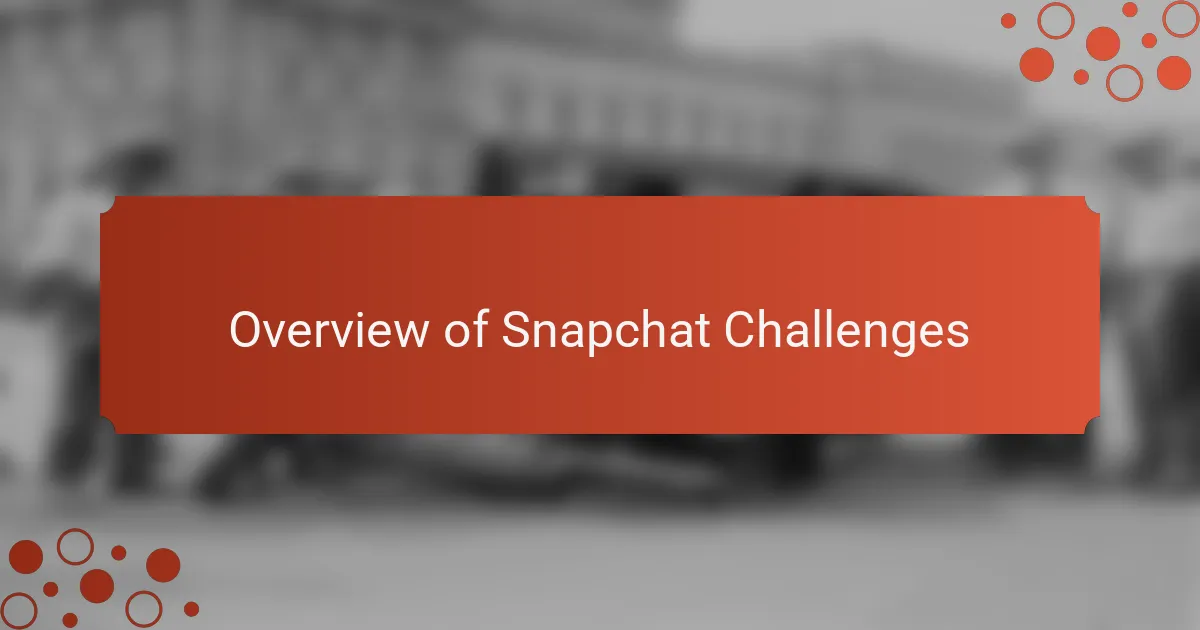
Overview of Snapchat Challenges
Snapchat challenges have become a fascinating part of how people engage creatively on social media. From what I’ve observed, these challenges often invite users to perform specific tasks or share moments within a short time frame, which really tests quick thinking and originality. Have you noticed how some of these challenges catch on so fast, spreading like wildfire in your friend circle?
What strikes me is the mix of fun and sometimes pressure these challenges bring. I remember trying one myself—I thought it was lighthearted, but the unexpected twist made it surprisingly intense. It made me wonder, are we participating for genuine enjoyment or just to keep up with the trend?
These challenges also reveal a lot about online culture and how communities form around shared experiences. When people come together to take on a Snapchat challenge, it feels like more than just a viral fad; it’s a way to connect and express creativity in a spontaneous, often amusing way. Have you ever felt that sense of camaraderie while watching or joining one?

Criteria for Judging Video Contests
When it comes to judging video contests, I personally value originality above all else. It’s thrilling to see a video that not only follows the brief but adds a unique twist—something that surprises me and makes me think, “Wow, I haven’t seen that before.” Have you ever watched a clip and caught yourself smiling just because the creator dared to be different?
Technical quality is another factor I consider, but not in a strict sense. I don’t expect Hollywood-level production; instead, I look for videos that use their resources well to tell a clear story. For example, a shaky camera might be distracting, but if the narrative or emotion shines through, I’m willing to overlook minor flaws. Doesn’t it feel more authentic when imperfections don’t get in the way of the message?
Lastly, I always ask myself whether the video evokes an emotional response—whether that’s laughter, empathy, or even surprise. From my experience, the most memorable entries are those that connect with viewers on a deeper level. After all, isn’t entertainment about how a story makes us feel, rather than just what we see on screen?
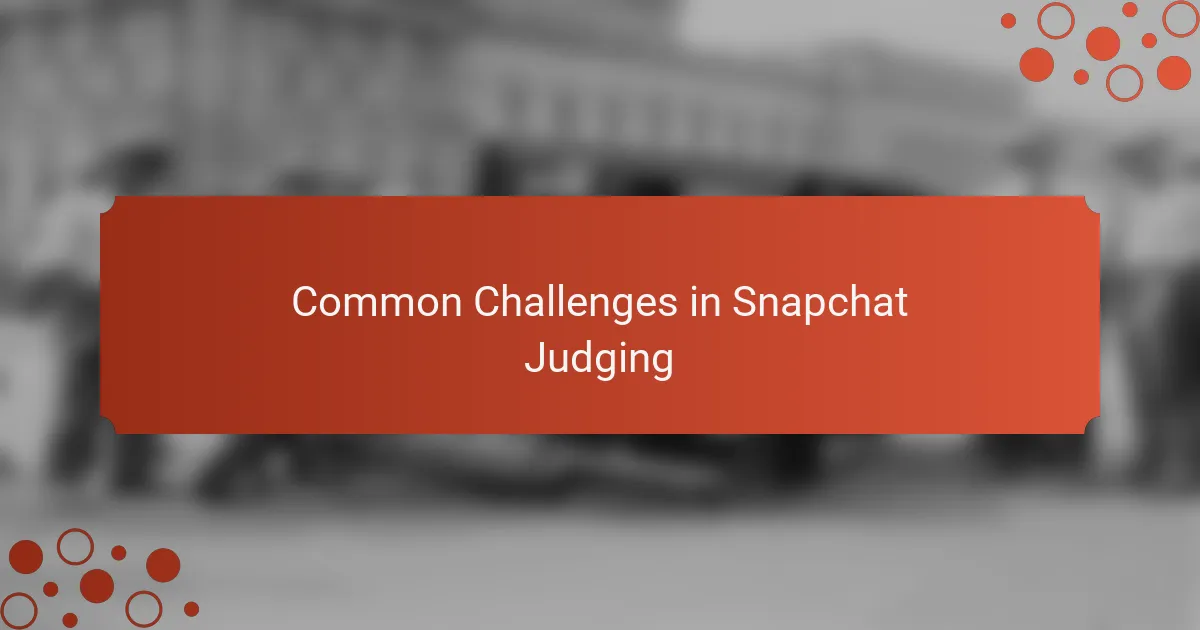
Common Challenges in Snapchat Judging
Judging Snapchat challenges often feels like walking a tightrope. I’ve found myself wrestling with the balance between creativity and adherence to the challenge rules. Sometimes, does sticking too rigidly to the criteria risk overlooking a genuinely innovative or heartfelt entry?
Another hurdle is the sheer variety of content styles and formats. From quick edits to raw, unfiltered moments, deciding what deserves top marks can be overwhelming. Have you ever struggled to compare a polished clip with a spontaneous, quirky one?
Then there’s the inevitable subjectivity that comes with judging personal expression. What moves me might not resonate with someone else, making me wonder if there’s ever a truly fair way to rank these videos. How do you weigh personal connection against technical merit without tipping the scales unfairly?

Personal Experiences with Snapchat Contests
I’ve dabbled in a few Snapchat contests myself, and honestly, the adrenaline of trying to capture a cool moment within those tight time frames is unlike any other creative challenge I’ve faced. One time, I thought I nailed the perfect clip, only to realize later that the lighting completely washed out the impact. Have you ever felt that mix of excitement and frustration when your vision doesn’t quite translate on screen?
What really sticks with me, though, is how these contests bring out a genuine sense of spontaneity. I remember a contest where participants shared their funniest everyday fails, and the raw, unapologetic honesty made me laugh more than polished videos ever have. Don’t you think sometimes the imperfect, candid moments feel more real and relatable than a carefully crafted performance?
On the flip side, I’ve noticed that judging my own entries against others pushes me to rethink what I value in creativity. Watching friends’ unique approaches opened my eyes to styles I hadn’t considered before. Has that ever happened to you—where trying to compete turns into a fresh learning experience instead?
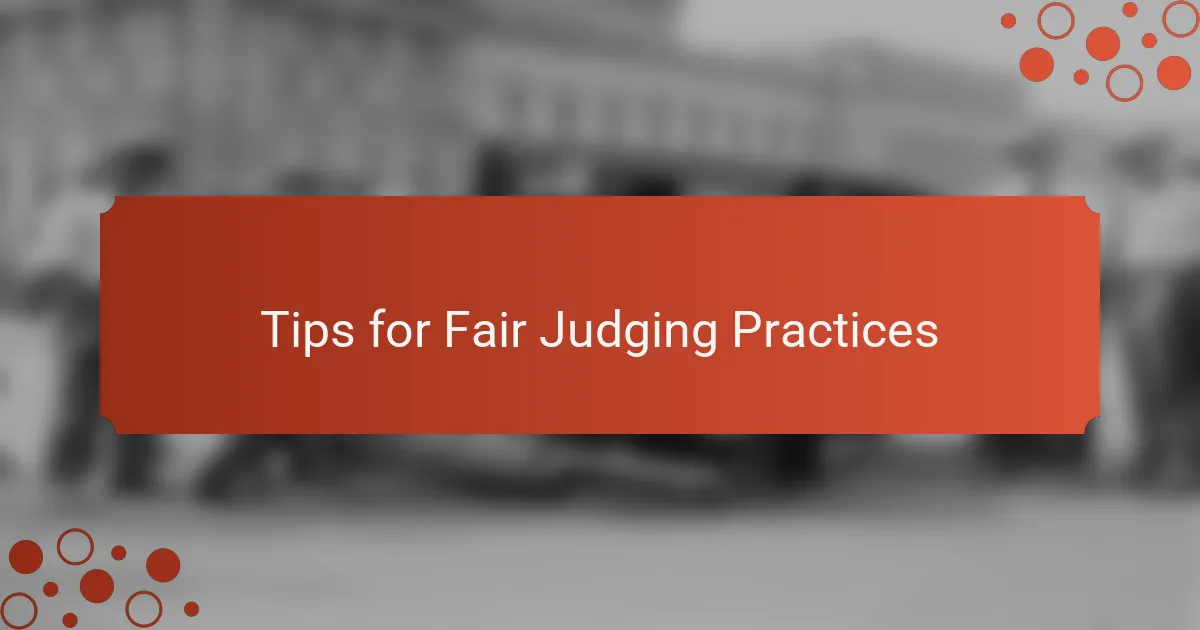
Tips for Fair Judging Practices
Fair judging, in my experience, starts with clear criteria that everyone understands. When judges know exactly what to look for—be it creativity, adherence to the challenge, or technical effort—it cuts down on confusion and keeps the process transparent. Have you ever felt frustrated because a winner seemed picked out of thin air? That’s exactly what clear guidelines help avoid.
Another tip I swear by is keeping personal biases in check. I remind myself to separate my own tastes from the quality of the video itself. For instance, just because a video style isn’t something I usually watch doesn’t mean it’s any less worthy. Don’t you find it refreshing when a judge appreciates something outside their norm?
Finally, I think it’s vital to approach judging with empathy. These creators put themselves out there, often nervously, hoping for honest feedback. So I try to focus on encouraging the effort and recognizing the courage behind each entry. After all, isn’t it more rewarding to lift others up than just to pick a winner?
